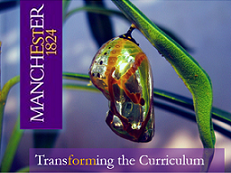The Sustainable Development Of Sugar
Nowadays, education for sustainability as a course has been established worldwide, compared with traditional and boring reference book teaching, students need diverse approaches to learn sustainability like art has great potential in education for sustainability (Jonsdottir, 2017). In particular, this article describes how the art of sugar sculpture connects to the cultural and environmental education.

There are many illuminating examples of creativity and inventiveness in 5000 years of Chinese history. Traditional folk handicraft is a significant component of national culture, it not only interprets the traditional way of life but also contains profound national spirit. Chinese sugar sculpture as an ancient and unique folk art has been established as an intangible cultural heritage in 2008.
Then how can sugar sculpture be made? And what is the sugar sculpture raw materials? They are usually associated with the stall on the street. Only with a small charcoal stove and some tools like sugar, bamboo sticks, charcoal and tweezers, a sugar sculpture will emerge. (https://en.wikipedia.org/wiki/Sugar_people) A concrete process of sugar sculpture production that is shown in a video. However, sugar sculptures have declined in spite of the development of era, perhaps they survive only in pictures, written records, and human memories in the future.
Regarding such issue, the reasons for it are multifaceted. Firstly, people still have some vocational prejudice against sugar handicraftsman, because they think the job is not decent and high-paying that cannot meet the needs of their daily life. Then, with the market explodes that more sophisticated toys for children, sugar sculptures do not update models to adapt the development of the market so that they no longer satisfy children. Finally, senile folk handicraftsmen have no inheritors due to some young apprentices have not the patience to learn complicated and difficult art (Zhao, 2005).
However, the sugar sculpture is a good art to educate for sustainability. The link between sugar sculpture and sustainable development is the extent to which it provides cultural connectivity (Cox & Bebbinton, 2016). The skill of sugar sculpture as a kind of cultural heritage originates from the life practice of previous generations.
The control of sugar temperature and the shape of sugar highlight the wisdom of ancient people. It is always found direct application in the rich variety of traditional folk events, like sacrifice activity, wedding, and longevity ceremony, in order to express the pursuit of hope, symbolizing auspicious, wealth and protection for evil. Thus, the folk-art activity with the nature of ancient Chinese religion not only reflect the living custom of the human labor but also have the positive impact for enriching the spiritual life of the people, it is equipped with a high cultural value. Nowadays, with the decline of sugar sculpture art, it is urgent to protect sugar sculpture for cultural sustainability.
- Government support. They should improve the marketization and standardization of sugar sculpture, establish a display platform in the museum to advocate its cultural value.
- Promoting the technological reform of sugar sculpture. Its skill should conform to the development of the era, for instance, updating equipment and some cartoon shapes can be added.
In addition, Jonsdottir (2017) has said: human beings need new approaches to think how we relate to the natural system so that establish a sustainable for the next generations. The art of sugar sculpture can establish a relationship with nature because of its raw material—sugarcane. Before harvesting, burning sugarcane filed is the main approach to deal with “trash” around the world, it involves straw, the tops, and green leaves, which constitute about 25% of the entire sugarcane stalk.
However, burning of sugarcane has a great challenge for environmental sustainability. There a video shows the status of burning sugarcane.
According to the research of two Brazil sugarcane factories in 2006-2007, the report calculates the production of per ton of sugar will emit 241kg of carbon dioxide into the atmosphere. Nearly half of the total emission is caused by residues burning (Figueiredo& Panosso& Romao&Scala, 2010). The carbon dioxide as a greenhouse gas is a major contributor to air pollution and climate change. Thus, the method to deal with the sugarcane straw must be changed.
- Government regulation. The government should issue regulations to prohibit the burning of sugarcane straw and encourage the conversion of sugarcane straw into a new energy source.
- Updating the method of harvesting. Green harvesting machine should be developed to replace traditional sugarcane burning.
However, the positive aspect is bagasse as a good raw material to produce ethanol after harvesting sugarcane, which is a renewable fuel can replace gasoline. It eliminates the lead compounds from the gasoline and noxious emissions, and due to a small quantity of fossil fuels is required to produce ethanol, the carbon dioxide emissions are reduced (Goldemberg& Coelho& Guardabassi, 2008). These two aspects clarify the sustainability of sugarcane.
Overall, the special art form of sugar sculpture brings a gustation as well as a visual delight. Its aesthetic and cultural values condense the wisdom of Chinese ancient human labor. Besides, sugar sculpture as an art form, it also makes us realize the connection between its raw materials and nature. Therefore, it is worth to be educated to protect the sugar sculpture so that recognize the importance of cultural and environmental sustainability.
Reference:
Cox, E., & Bebbington, J. (2016). Craft and Sustainable Development: An Investigation. The University of St Andrews.
De Figueiredo, E. B.&Panosso, A. R.& Romão, R., & La Scala, N. (2010). Greenhouse Gas Emission Associated with Sugar Production in Southern Brazil. Carbon Balance and Management, 5(1), 3.
Goldemberg, J., Coelho, S. T., & Guardabassi, P. (2008). The Sustainability of Ethanol Production from Sugarcane. Energy Policy, 36(6), 2086-2097.
Jónsdóttir, Á. B. (2017). Artistic Actions for Sustainability: Potential of Art in Education for Sustainability. The University of Iceland.
Leonard, j. (2011). Air Pollution Results from Sugarcane Ethanol Production.
The University of California.
Soini, K., & Birkeland, I. (2014). Exploring the Scientific Discourse on Cultural Sustainability. Geoforum, 51, 213-223.

